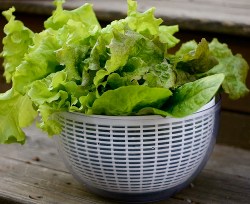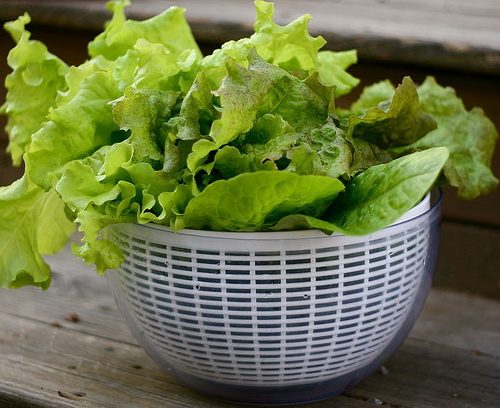
Photo by Chiot’s Run.
If you’ve noticed more carrot-crunching, more orange-peeling, and an abundance of leafy green salads lately, it’s probably not a coincidence. As The Washington Post reported earlier this week, Americans eat more fresh foods than they did five years ago.
The WaPo story was based on a national phone survey conducted by the Kellogg Foundation, which found that the majority of Americans are trying to eat more fresh fruits, vegetables, and whole grains, are shopping at farmers markets at least on occasion, and say they know “a lot or a little about where their fresh fruits and vegetables come from.” These findings are interesting — and they speak to the success of a whole array of efforts to get more of us cooking, examining what we eat, and honing in on the place where healthy and truly delicious foods intersect.
Less visible in the media landscape is the fact that the Kellogg Foundation survey also suggests that all this healthy eating has Americans looking outside themselves.
For one, they’re considering the environment — 64 percent say it’s “very important” that produce be grown in an “environmentally friendly way.” And the same number of people say it’s “very important” or “somewhat important” that produce be organic.
And nearly all — 93 percent — of those surveyed say they think it’s at least “somewhat important” to “make sure all Americans have equal access to fresh fruits and vegetables.” And three-quarters of the respondents said they support the idea of a national program that would double Supplemental Nutrition Assistance Program (SNAP, or “food stamps”) benefits at farmers markets. (Of course, this is more than an idea. As we reported recently, the U.S. Department of Agriculture is currently expanding the number of farmers markets around the nation that are equipped to accept EBT cards.)
Beyond these basic humanitarian instincts — and despite the apparent popularity of Tea Party politics — the survey also suggests that Americans look to our public institutions to play a part in ensuring healthy food access:
- 81 percent strongly or partly agree that Washington, D.C., needs to do more to increase access to locally produced fresh food in communities throughout the country.
- 86 percent strongly or partly agree that state and local officials should play a role in ensuring local fresh food is accessible to local residents.
- 89 percent strongly or partly agree that the community should play a role in ensuring local fresh food is accessible to local residents.
- 83 percent strongly or partly agree that Washington, D.C., should shift its support more toward smaller, local fruit and vegetable farmers and away from large farm businesses.
- 83 percent strongly or partly agree that Washington, D.C., should provide more incentives to encourage the creation of new businesses that sell, process, and distribute locally produced healthy food.
It may be too late for this data to influence the current Farm Bill process — which has taxpayers slated to support those “large farm businesses” with tens of billions in subsidies while offering a few million here and there for “smaller, local fruit and vegetable farmers.” And that’s the best-case scenario put forth by the Senate; the worst case (the House of Representatives’ version) would also involve tens of billions in cuts to SNAP — the very program that is proving crucial to fresh produce access.
Either way, it raises the question: Is this data a snapshot of a trend that has peaked and will now begin to reverse? Or are we seeing the early signs of a larger shift toward a saner, and — yes — a crunchier, leafier food system?
As I mentioned earlier this week, we do still have some choice in the matter.



